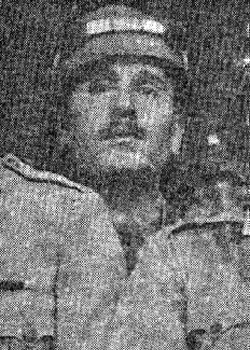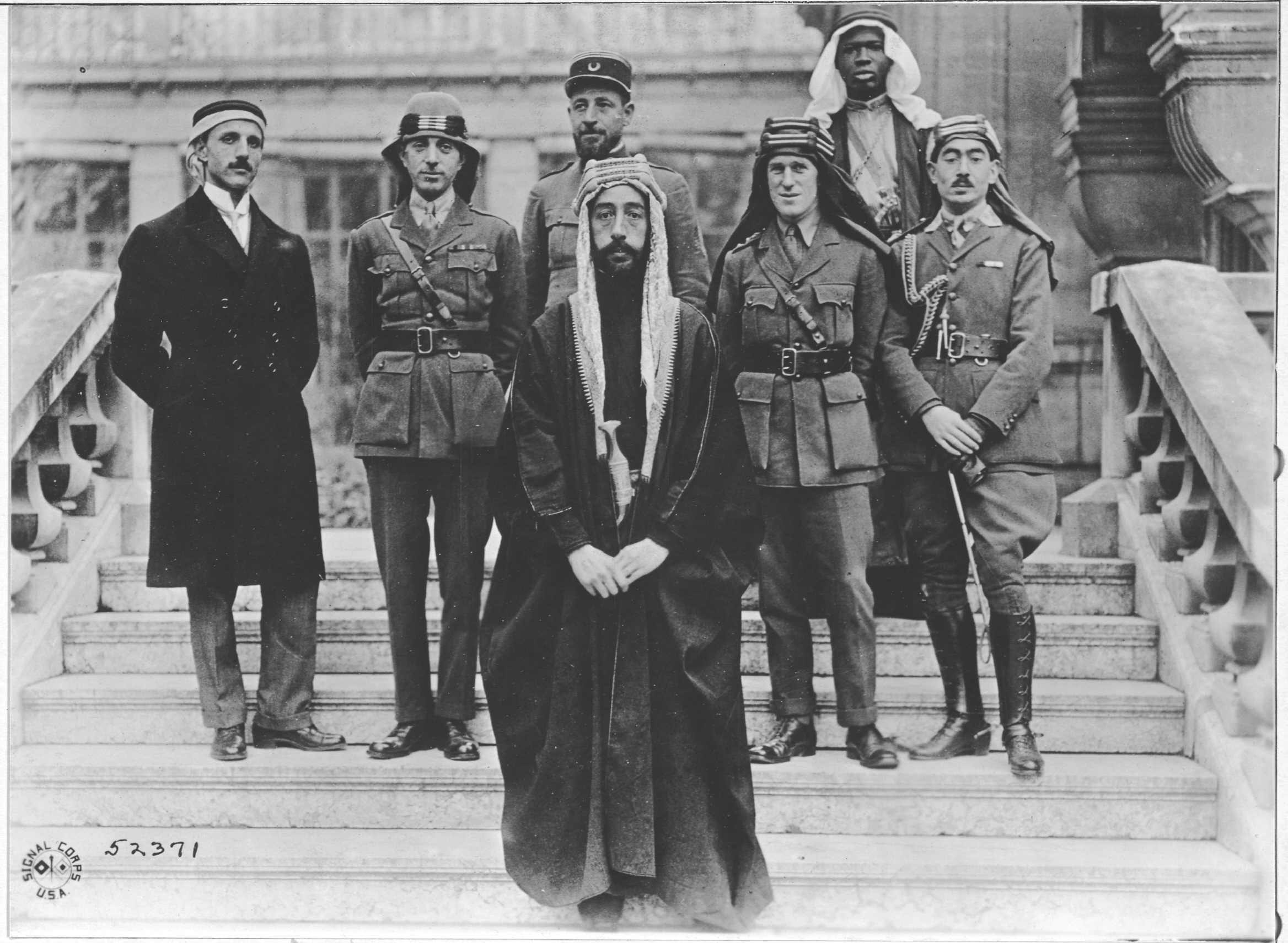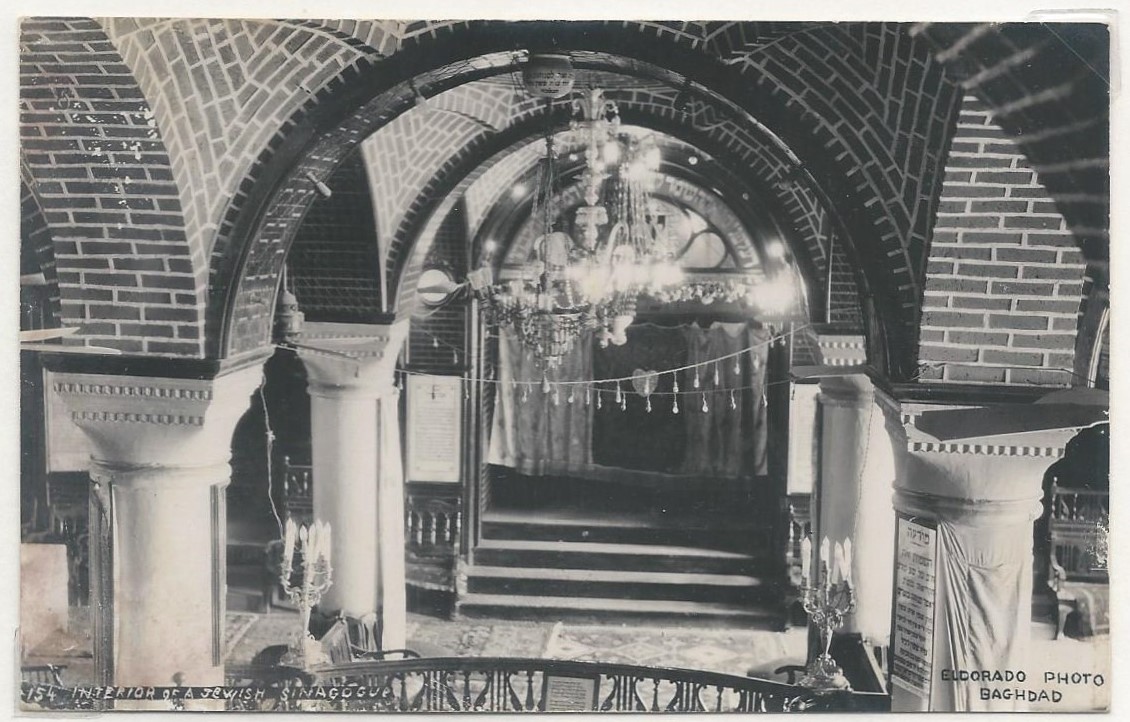|
Khairi Al-Hindawi
Khairuddin bin Saleh bin Abdul Qadir bin Khudhur Al-Hindawi Al-Hassani ( Arabic:خيرالدين بن صالح بن عبدالقادر بن خضر الهنداوي الحسني) was an Iraqi poet and a governor of several provinces. Family His family goes back to Hashim ibn 'Abd Manaf, the grandfather of prophet Mohammed. They called Khairi (Al-Hindawi) because his great grandfather, Khudhur, studied on the hands of an Indian scientist, called Ghulam Rasool Punjapi. Khairi's family were from Bab Al-Sheikh in Baghdad. His grandfather, Abdul Qadir, was the agent of the family of Gilani in directing their properties. Khairi's father also encouraged him to learn poetry and write it. Moving and Education He was born in the village of Abu Saeda in Diyala Province from an Arabian father and a Turkish mother. When he was five, he moved with his family to Baghdad, where he learned the basics writing, reading and a little bit of Quran. Khairi's mind was bigger than his age, so he did ... [...More Info...] [...Related Items...] OR: [Wikipedia] [Google] [Baidu] |
Diyala Province
Diyala Governorate ( ar, محافظة ديالى ) or Diyala Province is a Governorates of Iraq, governorate in central-eastern Iraq. Provincial government *Governor: Muthana al-Timimi *Deputy Governor: Mohammed Jassim al-Jubouri Council Geography Diyala Governorate extends to the northeast of Baghdad as far as the Iran–Iraq border, Iranian border. Its Capital (political), capital is Baqubah. It covers an area of 17,685 square kilometres (6,828 sq mi). A large portion of the province is drained by the Diyala River, a major tributary of the Tigris. Because of its proximity to two major sources of water, Diyala's main industry is agriculture, primarily Phoenix dactylifera, dates grown in large groves. The province also contains one of the largest olive groves in the Middle East. It is also recognized as the Orange (fruit), orange capital of the Middle East. The Hamrin Mountains pass through the governorate. Population The city is home to a diverse population ... [...More Info...] [...Related Items...] OR: [Wikipedia] [Google] [Baidu] |
Wasit, Iraq
Wasit ( ar, وَاسِط, Wāsiṭ, syr, ܘܐܣܛ) is an ancient city in Wasit Governorate, south east of Kut in eastern Iraq. History The city was built by al-Hajjaj ibn Yusuf in c. 702 CE on the west bank of the Tigris across from the historical city of Kashkar. Al-Hajjaj is said to have taken the doors for the citadel and the main mosque from Zanzaward. Al-Hajjaj died in Wasit in 714. To quote UNESCO: Wasit is an Islamic city built in the last quarter of the first Hijri century (7th century CE) by Al-Hajaj bin Yousif Al-Thaqafi, as an administrative centre for Iraq. As an ancient city its circumference is 16 kilometres. It was abandoned in the tenth Hijri century (16th century CE), after the change in the course of the river Tigris. Its remains stood sound and safe due to its distance from constructive and agricultural influence. Most of its buildings are of bricks. A survey was carried out from 1936 to 1942, and another in 1985. The large mosque was cleared out in four ... [...More Info...] [...Related Items...] OR: [Wikipedia] [Google] [Baidu] |
Yasin Al-Hashimi
Yasin al-Hashimi, born Yasin Hilmi Salman ( ar, ياسين الهاشمي; 1884 – 21 January 1937), was an Iraqi politician who twice served as the prime minister. Like many of Iraq's early leaders, al-Hashimi served as a military officer during Ottoman control of the country. He made his political debut under the government of his predecessor, Jafar al-Askari, and replaced him as prime minister shortly after, in August 1924. Al-Hashimi served for ten months before he was replaced, in turn by Abd al-Muhsin as-Sa'dun. Over the next ten years he filled a variety of governmental positions finally returning to the office of prime minister in March 1935. On 30 October 1936, Hashimi became the first Iraqi prime minister to be deposed in a coup, which was led by General Bakr Sidqi and a coalition of ethnic minorities. Unlike al-Askari, who was then his minister of defense, al-Hashimi survived the coup and made his way to Beirut, Lebanon, where he died three months later. His ol ... [...More Info...] [...Related Items...] OR: [Wikipedia] [Google] [Baidu] |
Faisal I Of Iraq
Faisal I bin Al-Hussein bin Ali Al-Hashemi ( ar, فيصل الأول بن الحسين بن علي الهاشمي, ''Faysal el-Evvel bin al-Ḥusayn bin Alī el-Hâşimî''; 20 May 1885 – 8 September 1933) was King of the Arab Kingdom of Syria or Greater Syria in 1920, and was King of Iraq from 23 August 1921 until his death. He was the third son of Hussein bin Ali, the Grand Emir and Sharif of Mecca, who was proclaimed as King of the Arabs in June 1916. He was a 38th-generation direct descendant of Muhammad, as he belonged to the Hashemite family. Faisal fostered unity between Sunni and Shiite Muslims to encourage common loyalty and promote pan-Arabism in the goal of creating an Arab state that would include Iraq, Syria and the rest of the Fertile Crescent. While in power, Faisal tried to diversify his administration by including different ethnic and religious groups in offices. However, Faisal's attempt at pan-Arab nationalism possibly contributed to the isolation of ce ... [...More Info...] [...Related Items...] OR: [Wikipedia] [Google] [Baidu] |
Hengam Island
Hengam Island ( fa, جزیره هنگام) is an Iranian island located south of Qeshm Island, Iran, in the Persian Gulf. Geography It is wide and shaped like a truncated cone. The island is generally calcareous and generally low-lying. The highest point on the island is Nakas Mountain with an altitude of about . The distance between Hengam Island and Qeshm Island is about The primary economic activity is fishing, as well as some tourism and sightseeing. The main sights of Hengam are the English harbor buildings along with the coal storage, the Portuguese shipwrecks, and aquatic animals such as turtles, dolphins, corals, and sharks. See also * Hormozgān Province *List of islands of Iran *List of lighthouses in Iran Gallery File:Hengamsland.jpg, File:HengamDolphins.jpg, References Further reading * ''Speak the Wind'' (Mack, 2021; photographs by Hoda Afshar; essay by Michael Taussig) This work documents the landscapes and people of the islands of Hormuz, Qeshm, ... [...More Info...] [...Related Items...] OR: [Wikipedia] [Google] [Baidu] |
Ali Bin Hussein, King Of Hejaz
Ali bin Hussein, Order of the British Empire, GBE ( ar, علي بن الحسين بن علي الهاشمي, translit=Alī ibn al-Ḥusayn ibn Alī el-Hâşimî; 18791935), was King of Hejaz and Grand Sharif of Mecca from October 1924 until he was deposed by Abdulaziz bin Abdulrahman Al Saud in December 1925. He was the eldest son of King Hussein bin Ali and a scion of the Hashemite family. With the passing of the kingship from his father he also became the heir to the Sharifian Caliphate, title of caliph, but he did not adopt the office and the style of caliph. Early life The eldest son of Hussein, Ali bin Hussein was born in Mecca and was educated at Ghalata Serai College (Galatasaray High School) in İstanbul (Constantinople). His father was appointed Grand Sharif of Mecca by the Ottoman Empire in 1908. However, his relationship with the Young Turks in control of the Empire increasingly became strained, and, in 1916, he became one of the leaders of the Arab Revolt against Turk ... [...More Info...] [...Related Items...] OR: [Wikipedia] [Google] [Baidu] |
Frederick Stanley Maude
Lieutenant-General Sir Frederick Stanley Maude KCB CMG DSO (24 June 1864 – 18 November 1917) was a British Army officer. He is known for his operations in the Mesopotamian campaign during the First World War and for conquering Baghdad in 1917. Early life Maude was born in Gibraltar, the youngest son of General Sir Frederick Francis Maude, who had been awarded the Victoria Cross in 1855 during the Crimean War, and of Catherine Mary, ''née'' Bisshopp, daughter of Very Reverend Sir George Bisshopp, 8th Baronet, Dean of Lismore. The Maude family claimed descent from Eustace de Montaut, who came over to England during the Norman Conquest. Maude attended St Michael's School, Aldis House, Slough, and Eton College, where he was elected to Pop. After attending a crammer, he entered the Royal Military College, Sandhurst. He graduated in 1883 and was commissioned into the Coldstream Guards in February 1884. Early service Maude first saw active service in Egypt from March to Septe ... [...More Info...] [...Related Items...] OR: [Wikipedia] [Google] [Baidu] |
Ottoman Army
The military of the Ottoman Empire ( tr, Osmanlı İmparatorluğu'nun silahlı kuvvetleri) was the armed forces of the Ottoman Empire. Army The military of the Ottoman Empire can be divided in five main periods. The foundation era covers the years between 1300 (Byzantine expedition) and 1453 (Conquest of Constantinople), the classical period covers the years between 1451 (second enthronement of Sultan Mehmed II) and 1606 (Peace of Zsitvatorok), the reformation period covers the years between 1606 and 1826 (Auspicious Incident, Vaka-i Hayriye), the modernisation period covers the years between 1826 and 1858 and decline period covers the years between 1861 (enthronement of Sultan Abdülaziz) and 1918 (Armistice of Mudros). The Ottoman army is the forerunner of the Turkish Armed Forces. Foundation period (1300–1453) The earliest form of the Ottoman military was a steppe-nomadic cavalry force.Mesut Uyar, Edward J. Erickson, ''A Military History of the Ottomans: From Osman to ... [...More Info...] [...Related Items...] OR: [Wikipedia] [Google] [Baidu] |
Jews In Iraq
The history of the Jews in Iraq ( he, יְהוּדִים בָּבְלִים, ', ; ar, اليهود العراقيون, ) is documented from the time of the Babylonian captivity c. 586 BC. Iraqi Jews constitute one of the world's oldest and most historically significant Jewish communities. The Jewish community of what is termed in Jewish sources "Babylon" or "Babylonia" included Ezra the scribe, whose return to Judea in the late 6th century BCE is associated with significant changes in Jewish ritual observance and the rebuilding of the Temple in Jerusalem. The Babylonian Talmud was compiled in " Babylonia", identified with modern Iraq. From the biblical Babylonian period to the rise of the Islamic caliphate, the Jewish community of "Babylon" thrived as the center of Jewish learning. The Mongol invasion and Islamic discrimination in the Middle Ages led to its decline. Under the Ottoman Empire, the Jews of Iraq fared better. The community established modern schools in the sec ... [...More Info...] [...Related Items...] OR: [Wikipedia] [Google] [Baidu] |
Muslims
Muslims ( ar, المسلمون, , ) are people who adhere to Islam, a monotheistic religion belonging to the Abrahamic tradition. They consider the Quran, the foundational religious text of Islam, to be the verbatim word of the God of Abraham (or '' Allah'') as it was revealed to Muhammad, the main Islamic prophet. The majority of Muslims also follow the teachings and practices of Muhammad ('' sunnah'') as recorded in traditional accounts (''hadith''). With an estimated population of almost 1.9 billion followers as of 2020 year estimation, Muslims comprise more than 24.9% of the world's total population. In descending order, the percentage of people who identify as Muslims on each continental landmass stands at: 45% of Africa, 25% of Asia and Oceania (collectively), 6% of Europe, and 1% of the Americas. Additionally, in subdivided geographical regions, the figure stands at: 91% of the Middle East–North Africa, 90% of Central Asia, 65% of the Caucasus, 42% of Southeast Asi ... [...More Info...] [...Related Items...] OR: [Wikipedia] [Google] [Baidu] |
Great Britain
Great Britain is an island in the North Atlantic Ocean off the northwest coast of continental Europe. With an area of , it is the largest of the British Isles, the largest European island and the ninth-largest island in the world. It is dominated by a maritime climate with narrow temperature differences between seasons. The 60% smaller island of Ireland is to the west—these islands, along with over 1,000 smaller surrounding islands and named substantial rocks, form the British Isles archipelago. Connected to mainland Europe until 9,000 years ago by a landbridge now known as Doggerland, Great Britain has been inhabited by modern humans for around 30,000 years. In 2011, it had a population of about , making it the world's third-most-populous island after Java in Indonesia and Honshu in Japan. The term "Great Britain" is often used to refer to England, Scotland and Wales, including their component adjoining islands. Great Britain and Northern Ireland now constitute the ... [...More Info...] [...Related Items...] OR: [Wikipedia] [Google] [Baidu] |






